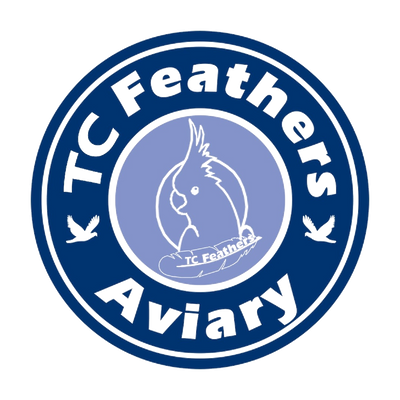
A question we are asked frequently at our aviary is how to get a parrot to eat fresh food. We hear of birds that will only eat one or two types of fresh foods and some that won’t eat any. This week’s blog is about how to encourage your parrots to eat more fruits, veggies and grains.
Pickiness in parrots can usually be traced back to their “childhood”. Young birds become quickly accustomed to whatever food they are offered the most and also, to whatever they are offered first. Parrots that are started out on just a seed mix and not offered any variety in their diet will most likely prefer only to eat seeds the rest of their lives. So, if a young bird is not introduced to fresh food during the weaning process, it can sometimes be an uphill battle to teach them to eat it.
Ideally, if you have a parrot that is still in the process of being hand-fed, ask the breeder (or whomever is raising the baby) to introduce some fresh foods. It doesn’t need to be anything complicated and time consuming, just a bag of frozen mixed vegetables and some berries can suffice. Of course, the more variety the better, but we’ve found that introducing just a handful of different fruits and veggies is usually enough to give babies the taste for fresh foods, which tends to stick with them the rest of their lives.
Now lets talk about the scenario most of us encounter at some point in our life with parrots. Say you adopt an adult bird or one that was recently weaned. Often, we have no information about how the bird was raised and what, if any, fresh food had been introduced while the bird was being hand-fed. Maybe the parrot hadn’t been hand-fed at all, which makes things even more complicated. Here are some steps you can take to encourage your bird not only to try more fresh foods, but to actually enjoy eating them:
Step one: Know your parrot. Research the species of parrot(s) you have and learn what types of fruits or veggies they actually eat in their natural environment. This doesn’t mean that you can only offer foods that are naturally occurring in your bird’s natural environment. You can offer anything that is bird safe, but starting with what your bird would actually eat in the wild can be helpful when starting your bird on fresh foods.
Step two: Serve it warm. When baby parrots are being hand-fed, or parent raised, the food they eat is warm. For example, if you are trying to get your bird to eat a piece of banana, and bananas are usually served at room temperature, throw it in the microwave or otherwise warm it up (be sure it is not too hot when you serve it to your bird). Often, you will find that your bird will be more curious about a food that is warm rather than one that is cold or room temp.
Step three: Cut it into small pieces. Even if you have a bigger bird, cutting or chopping the fresh foods into little pieces that the bird does not need to pick up with his foot can be a helpful trick. It won’t work for all birds, but it is worth trying. This is especially true if you have bird that is not a “foot eater” (doesn’t pick up food with it’s foot to eat it). Parakeets and Cockatiels are examples of this.
Step four: Try everything you can find. Lets say you have a super picky eater who refuses the 10 different fruits or veggies you have tried so far. There are literally hundreds, if not thousands, of different fruits, veggies and grains you can get locally to offer your bird. Even if you only find 3 fresh foods your bird will actually eat, that is 3 more than he would eat before.
Step five: Never give up. One of the cool things about parrots, and one of the reasons a lot of us have parrots, is that they can live a very long time. That means you have many years to convince your bird that fresh food is actually a good thing. I know of many older, and in some cases very old, birds that have learned to eat fresh foods.
Step six: Get creative. Look up “parrot chop”. Make birdie bread. Mix fresh foods into other foods that your bird loves. Sometimes, tricking your bird into trying fresh foods by accident can be the key to them realizing that fruits and veggies actually taste good. It is kind of like having a toddler, you have to trick them into eating their veggies. The same strategies can work on parrots.
Some of the most popular foods amongst our store residents and personal birds are scrambled eggs, sweet potatoes and yams, butternut squash, mixed veggies, grapes, all types of berries, leafy greens (be careful of those high in oxalic acid such as spinach), brown rice, quinoa, whole grain pasta, legumes, pomegranate seeds, snap peas and edamame. We even have some species who like chicken (weird, but true).
When feeding fresh foods the general rule of thumb is that if the food is not healthy for you, it will not be healthy for your bird. Avoid salt, added sugar and heavily processed foods. Also, NEVER feed chocolate or avocado.
We hope this week’s blog will result in a fresh (no pun intended) outlook on enriching your parrot’s diet and in the addition of some “fresh food converts”.
Thanks for reading!
-The TC Feathers crew

Comments